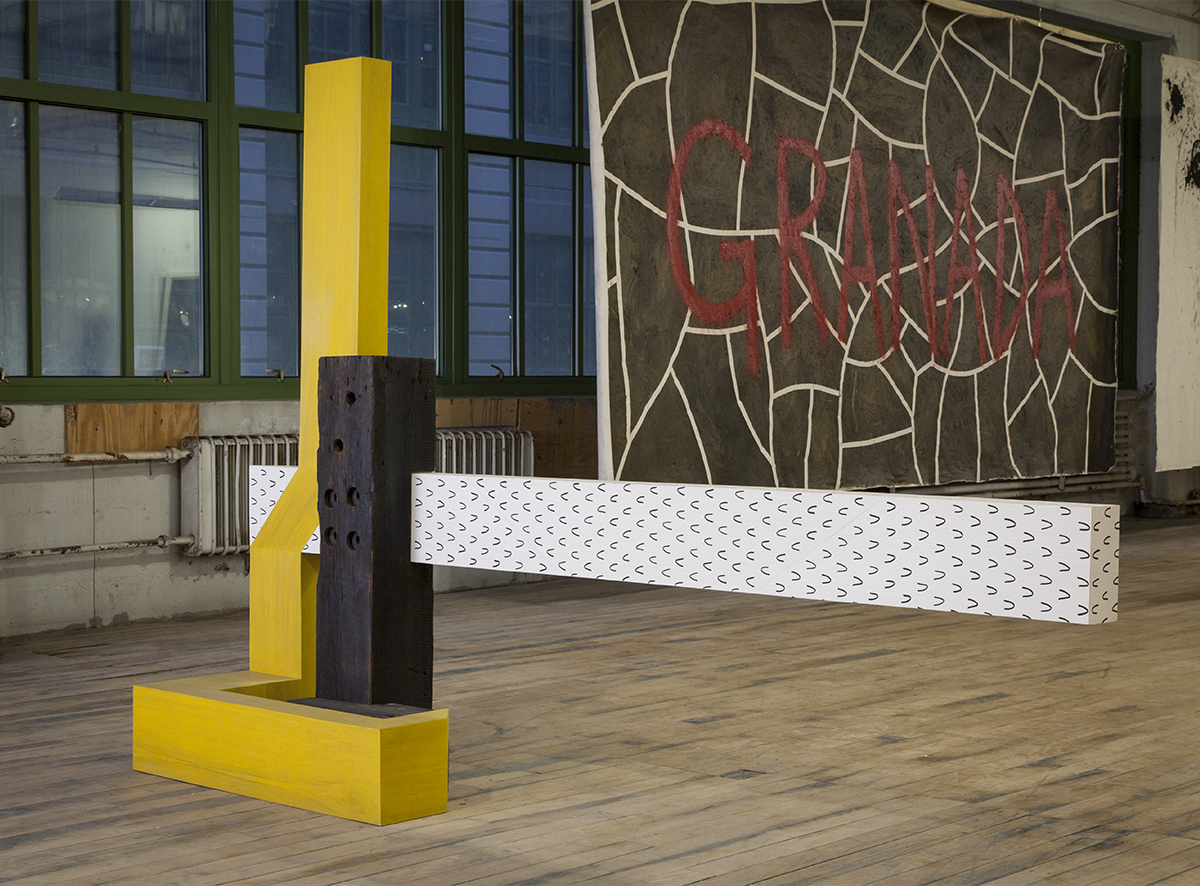by Noah Dillon

Rachel Beach, “Canary,” 2011. Screenprint and oil paint, plywood, reclaimed beams, 70 x 96 x 18″. Courtesy of the artist. Photo by Rachel Styer.
Unlike most barricades, Rachel Beach’s toll-gate-like structure is an invitation, rather than a barrier. Like much of her work, it comes to us as much as a painting as it does a sculpture: a zig-zagging base snakes upward in lusty gamboge, a charcoal beam rises vertically to support a horizontal arm tattooed with black <s and >s. Polychrome sculpture has had a rough time in the contemporary Western arts. We want to deny the bright colors applied by Greeks and Romans to their beautifully blank marbles. Beach’s probable predecessors and inspirations—such as Tony Smith, Joel Shapiro, and Mark Di Suvero—used color rather sparingly, monochromatically, or not at all. Another progenitor, David Smith, had paint stripped from some of his sculptures by a thoroughly fucked-up estate executor under the guidance of Clement Greenberg. Women, perhaps because their visibility in the art world is already horrifically low, can sometimes get away with more. Anne Truitt’s polychrome totems come to mind, as do Elizabeth Murray’s shaped canvases, or more recently Davina Semo’s spray-painted concrete monoliths, all of which also skirt a line between two- and three-dimensional art. It’s unfortunate that Beach’s work is so exceptionally unique in this regard. In other words, that formalist sculpture is still apparently fenced in by ingrained codes of decorum and color, and that gender can be seen threaded through those two concerns. Before even considering the implications of power and the way that her piece directs a body’s movement down the hallway, past tapestry paintings and sculptures on a wall, one first still has to bound over the twin hurdles of sex and sculptural dogma. You see? A barrier is an invitation for us to break it.